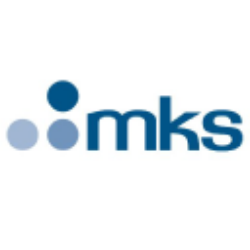TDY

Teledyne Technologies Incorporated
TDY
(2.2)458,20 USD
22.02% ROA
10.08% ROE
23.71x PER
20.643.528.250,00 USD
30.02% DER
0% Yield
16.88% NPM
Teledyne Technologies Incorporated Stock Analysis
Teledyne Technologies Incorporated Fundamental Analysis
Fundamental analysis in stock investing is like studying the foundation of a house before buying it. It involves looking at a company's financial health, like its earnings, assets, and debts, to determine if it's a good investment based on its fundamental strength and potential for growth.
| # | Analysis | Rating |
|---|---|---|
| 1 |
ROA
The stock's ability to make a lot of money from its assets shows that it is very profitable, making it a good choice for people who want to invest and make a lot of money. |
|
| 2 |
DER
The stock has a minimal amount of debt (37%) relative to its ownership, showcasing a strong financial position and lower risk for investors. |
|
| 3 |
ROE
ROE in an average range (9.33%) suggests satisfactory profitability and decent utilization of shareholders' equity. |
|
| 4 |
PBV
The stock's PBV ratio (2.11x) reflects a fair valuation, making it an attractive option for investors seeking balanced opportunities. |
|
| 5 |
Revenue Growth
Company's revenue has experienced consistent growth over the last three years, indicating a favorable financial trajectory and making it an attractive investment choice. |
|
| 6 |
Net Profit Growth
The net profit of this company has shown steady growth over the past three years, highlighting its positive financial trajectory and making it an appealing choice for potential investors. |
|
| 7 |
Buffet Intrinsic Value
Based on Warren Buffett's formula, the company's stock appears undervalued (3.227), presenting an attractive investment chance with its intrinsic value surpassing the current market price. |
|
| 8 |
Assets Growth
Company has experienced no growth in revenue over the past three years, suggesting limited profitability and making it a less desirable investment opportunity. |
|
| 9 |
Graham Number
The Graham number calculation reveals that this company's stock price is potentially inflated, implying that it may not be a desirable investment option. |
|
| 10 |
Dividend Growth
The company's dividend growth has been flat for the past three years, raising concerns for potential investors seeking reliable returns. |
|
| 11 |
Dividend
Investors should note the absence of dividends from the company in the last three years, indicating potential financial challenges. |
Teledyne Technologies Incorporated Technical Analysis
Technical analysis in stock investing is like reading the patterns on a weather map to predict future weather conditions. It involves studying past stock price movements and trading volumes to make predictions about where a stock's price might go next, without necessarily looking at the company's financial health.
| # | Analysis | Recommendation |
|---|---|---|
| 1 | Awesome Oscillator | Hold |
| 2 | MACD | Buy |
| 3 | RSI | Hold |
| 4 | Stoch RSI | Sell |
Teledyne Technologies Incorporated Price Chart
Financial Statements
Financial statements are like report cards for companies. They show how much money a company makes (income statement), what it owns and owes (balance sheet), and where it spends its money (cash flow statement), helping stock investors understand if a company is healthy and worth investing in.
Income Statements
An income statement for a company is like a scoreboard for its profits and losses. It shows how much money the company made (revenue) and how much it spent to make that money (expenses), helping stock investors see if a company is making a profit or not.
Revenue in stock investing is the total amount of money a company earns from its sales, and it's a key factor that investors consider to assess a company's financial performance and growth potential.
| Year | Revenue | Growth |
|---|---|---|
| 1998 | 780.400.000 | |
| 1999 | 803.400.000 | 2.86% |
| 2000 | 795.100.000 | -1.04% |
| 2001 | 744.300.000 | -6.83% |
| 2002 | 772.700.000 | 3.68% |
| 2003 | 840.700.000 | 8.09% |
| 2004 | 1.016.600.000 | 17.3% |
| 2005 | 1.206.500.000 | 15.74% |
| 2006 | 1.433.200.000 | 15.82% |
| 2007 | 1.622.300.000 | 11.66% |
| 2008 | 1.895.300.000 | 14.4% |
| 2009 | 1.765.200.000 | -7.37% |
| 2010 | 1.777.900.000 | 0.71% |
| 2011 | 1.941.900.000 | 8.45% |
| 2012 | 2.127.300.000 | 8.72% |
| 2013 | 2.338.600.000 | 9.04% |
| 2014 | 2.394.000.000 | 2.31% |
| 2015 | 2.298.100.000 | -4.17% |
| 2016 | 2.139.800.000 | -7.4% |
| 2017 | 2.603.800.000 | 17.82% |
| 2018 | 2.901.800.000 | 10.27% |
| 2019 | 3.163.600.000 | 8.28% |
| 2020 | 3.086.200.000 | -2.51% |
| 2021 | 4.614.300.000 | 33.12% |
| 2022 | 5.458.600.000 | 15.47% |
| 2023 | 5.610.000.000 | 2.7% |
| 2023 | 5.635.500.000 | 0.45% |
| 2024 | 5.496.400.000 | -2.53% |
Research and Development Expenses are the costs a company incurs to create and improve its products or services, which can be important for investors to evaluate a company's innovation and potential for future growth.
| Year | Research and Development Expenses | Growth |
|---|---|---|
| 1998 | 0 | |
| 1999 | 0 | 0% |
| 2000 | 0 | 0% |
| 2001 | 0 | 0% |
| 2002 | 0 | 0% |
| 2003 | 0 | 0% |
| 2004 | 0 | 0% |
| 2005 | 0 | 0% |
| 2006 | 0 | 0% |
| 2007 | 0 | 0% |
| 2008 | 0 | 0% |
| 2009 | 0 | 0% |
| 2010 | 0 | 0% |
| 2011 | 0 | 0% |
| 2012 | 364.200.000 | 100% |
| 2013 | 388.200.000 | 6.18% |
| 2014 | 428.800.000 | 9.47% |
| 2015 | 476.600.000 | 10.03% |
| 2016 | 167.700.000 | -184.2% |
| 2017 | 177.700.000 | 5.63% |
| 2018 | 185.600.000 | 4.26% |
| 2019 | 209.600.000 | 11.45% |
| 2020 | 196.000.000 | -6.94% |
| 2021 | 299.300.000 | 34.51% |
| 2022 | 360.600.000 | 17% |
| 2023 | 0 | 0% |
| 2023 | 365.800.000 | 100% |
| 2024 | 0 | 0% |
General and Administrative Expenses are the costs a company incurs to run its day-to-day operations, such as office rent, salaries, and utilities, which investors consider to understand a company's overall efficiency and management effectiveness.
| Year | General and Administrative Expenses | Growth |
|---|---|---|
| 1998 | 0 | |
| 1999 | 0 | 0% |
| 2000 | 0 | 0% |
| 2001 | 0 | 0% |
| 2002 | 0 | 0% |
| 2003 | 0 | 0% |
| 2004 | 0 | 0% |
| 2005 | 0 | 0% |
| 2006 | 0 | 0% |
| 2007 | 0 | 0% |
| 2008 | 0 | 0% |
| 2009 | 0 | 0% |
| 2010 | 0 | 0% |
| 2011 | 0 | 0% |
| 2012 | 0 | 0% |
| 2013 | 0 | 0% |
| 2014 | 0 | 0% |
| 2015 | 0 | 0% |
| 2016 | 0 | 0% |
| 2017 | 0 | 0% |
| 2018 | 0 | 0% |
| 2019 | 0 | 0% |
| 2020 | 649.900.000 | 100% |
| 2021 | 1.056.600.000 | 38.49% |
| 2022 | 1.145.200.000 | 7.74% |
| 2023 | 0 | 0% |
| 2023 | 1.195.900.000 | 100% |
| 2024 | 0 | 0% |
EBITDA stands for Earnings Before Interest, Taxes, Depreciation, and Amortization. It is a measure that helps stock investors analyze a company's profitability by looking at its earnings without considering certain expenses. This helps to get a clearer picture of the company's financial performance and its ability to generate cash flow.
| Year | EBITDA | Growth |
|---|---|---|
| 1998 | 88.100.000 | |
| 1999 | 90.100.000 | 2.22% |
| 2000 | 71.900.000 | -25.31% |
| 2001 | 40.100.000 | -79.3% |
| 2002 | 64.000.000 | 37.34% |
| 2003 | 70.100.000 | 8.7% |
| 2004 | 91.700.000 | 23.56% |
| 2005 | 126.300.000 | 27.4% |
| 2006 | 157.100.000 | 19.61% |
| 2007 | 194.100.000 | 19.06% |
| 2008 | 236.200.000 | 17.82% |
| 2009 | 213.900.000 | -10.43% |
| 2010 | 225.700.000 | 5.23% |
| 2011 | 292.500.000 | 22.84% |
| 2012 | 324.700.000 | 9.92% |
| 2013 | 336.000.000 | 3.36% |
| 2014 | 395.400.000 | 15.02% |
| 2015 | 372.500.000 | -6.15% |
| 2016 | 351.700.000 | -5.91% |
| 2017 | 436.800.000 | 19.48% |
| 2018 | 540.100.000 | 19.13% |
| 2019 | 610.800.000 | 11.57% |
| 2020 | 604.100.000 | -1.11% |
| 2021 | 982.000.000 | 38.48% |
| 2022 | 1.335.200.000 | 26.45% |
| 2023 | 1.254.400.000 | -6.44% |
| 2023 | 1.360.800.000 | 7.82% |
| 2024 | 987.600.000 | -37.79% |
Gross profit is the money a company makes from selling its products or services after subtracting the cost of producing or providing them, and it is an important measure for investors to understand a company's profitability.
| Year | Gross Profit | Growth |
|---|---|---|
| 1998 | 219.400.000 | |
| 1999 | 227.600.000 | 3.6% |
| 2000 | 230.300.000 | 1.17% |
| 2001 | 170.900.000 | -34.76% |
| 2002 | 187.800.000 | 9% |
| 2003 | 204.000.000 | 7.94% |
| 2004 | 270.300.000 | 24.53% |
| 2005 | 336.900.000 | 19.77% |
| 2006 | 413.000.000 | 18.43% |
| 2007 | 485.900.000 | 15% |
| 2008 | 571.500.000 | 14.98% |
| 2009 | 509.200.000 | -12.23% |
| 2010 | 539.100.000 | 5.55% |
| 2011 | 651.200.000 | 17.21% |
| 2012 | 748.200.000 | 12.96% |
| 2013 | 838.600.000 | 10.78% |
| 2014 | 906.900.000 | 7.53% |
| 2015 | 870.300.000 | -4.21% |
| 2016 | 831.000.000 | -4.73% |
| 2017 | 991.600.000 | 16.2% |
| 2018 | 1.110.800.000 | 10.73% |
| 2019 | 1.243.300.000 | 10.66% |
| 2020 | 1.180.900.000 | -5.28% |
| 2021 | 1.841.400.000 | 35.87% |
| 2022 | 2.330.300.000 | 20.98% |
| 2023 | 2.421.200.000 | 3.75% |
| 2023 | 2.439.400.000 | 0.75% |
| 2024 | 2.370.400.000 | -2.91% |
Net income in stock investing is like the money a company actually gets to keep as profit after paying all its bills, and it's an important measure to understand how well a company is doing financially.
| Year | Net Profit | Growth |
|---|---|---|
| 1998 | 48.700.000 | |
| 1999 | 49.000.000 | 0.61% |
| 2000 | 32.300.000 | -51.7% |
| 2001 | 6.600.000 | -389.39% |
| 2002 | 25.400.000 | 74.02% |
| 2003 | 29.700.000 | 14.48% |
| 2004 | 41.700.000 | 28.78% |
| 2005 | 64.200.000 | 35.05% |
| 2006 | 80.300.000 | 20.05% |
| 2007 | 98.500.000 | 18.48% |
| 2008 | 122.200.000 | 19.39% |
| 2009 | 113.300.000 | -7.86% |
| 2010 | 120.500.000 | 5.98% |
| 2011 | 255.200.000 | 52.78% |
| 2012 | 164.100.000 | -55.51% |
| 2013 | 185.000.000 | 11.3% |
| 2014 | 217.700.000 | 15.02% |
| 2015 | 195.800.000 | -11.18% |
| 2016 | 190.900.000 | -2.57% |
| 2017 | 227.200.000 | 15.98% |
| 2018 | 333.800.000 | 31.94% |
| 2019 | 402.300.000 | 17.03% |
| 2020 | 401.900.000 | -0.1% |
| 2021 | 445.300.000 | 9.75% |
| 2022 | 788.600.000 | 43.53% |
| 2023 | 794.400.000 | 0.73% |
| 2023 | 885.700.000 | 10.31% |
| 2024 | 720.800.000 | -22.88% |
EPS, or earnings per share, is a measure that shows how much profit a company has earned for each outstanding share of its stock, and it is important for stock investors as it helps understand the profitability of a company and compare it with other companies in the market.
| Year | Earning per Share (EPS) | Growth |
|---|---|---|
| 1998 | 2 | |
| 1999 | 2 | 0% |
| 2000 | 1 | 0% |
| 2001 | 0 | 0% |
| 2002 | 1 | 0% |
| 2003 | 1 | 0% |
| 2004 | 1 | 100% |
| 2005 | 2 | 0% |
| 2006 | 2 | 50% |
| 2007 | 3 | 0% |
| 2008 | 3 | 33.33% |
| 2009 | 3 | 0% |
| 2010 | 3 | 0% |
| 2011 | 7 | 50% |
| 2012 | 4 | -50% |
| 2013 | 5 | 0% |
| 2014 | 6 | 20% |
| 2015 | 6 | 0% |
| 2016 | 5 | 0% |
| 2017 | 6 | 16.67% |
| 2018 | 9 | 33.33% |
| 2019 | 11 | 18.18% |
| 2020 | 11 | -10% |
| 2021 | 10 | 0% |
| 2022 | 17 | 37.5% |
| 2023 | 17 | 0% |
| 2023 | 19 | 11.11% |
| 2024 | 15 | -20% |
Cashflow Statements
Cashflow statements show the movement of money in and out of a company, helping stock investors understand how much money a company makes and spends. By examining cashflow statements, investors can assess if a company is generating enough cash to pay its bills, invest in growth, and provide returns to stockholders.
Free cash flow is the leftover cash that a company generates after covering its operating expenses and capital expenditures, which is important for stock investors as it shows how much money a company has available to invest in growth, pay dividends, or reduce debt.
| Year | Free Cashflow | Growth |
|---|---|---|
| 1998 | 49.000.000 | |
| 1999 | 15.900.000 | -208.18% |
| 2000 | 7.300.000 | -117.81% |
| 2001 | -8.700.000 | 183.91% |
| 2002 | 57.900.000 | 115.03% |
| 2003 | 36.500.000 | -58.63% |
| 2004 | 66.100.000 | 44.78% |
| 2005 | 72.500.000 | 8.83% |
| 2006 | 52.000.000 | -39.42% |
| 2007 | 126.400.000 | 58.86% |
| 2008 | 78.500.000 | -61.02% |
| 2009 | 118.700.000 | 33.87% |
| 2010 | 110.800.000 | -7.13% |
| 2011 | 174.900.000 | 36.65% |
| 2012 | 124.200.000 | -40.82% |
| 2013 | 131.500.000 | 5.55% |
| 2014 | 244.400.000 | 46.19% |
| 2015 | 163.200.000 | -49.75% |
| 2016 | 229.400.000 | 28.86% |
| 2017 | 316.200.000 | 27.45% |
| 2018 | 360.100.000 | 12.19% |
| 2019 | 393.700.000 | 8.53% |
| 2020 | 547.500.000 | 28.09% |
| 2021 | 723.000.000 | 24.27% |
| 2022 | 394.200.000 | -83.41% |
| 2023 | 255.200.000 | -54.47% |
| 2023 | 721.200.000 | 64.61% |
| 2024 | 301.000.000 | -139.6% |
Operating cash flow represents the cash generated or consumed by a company's day-to-day operations, excluding external investing or financing activities, and is crucial for stock investors as it shows how much cash a company is generating from its core business operations.
| Year | Operating Cashflow | Growth |
|---|---|---|
| 1998 | 67.100.000 | |
| 1999 | 47.400.000 | -41.56% |
| 2000 | 38.000.000 | -24.74% |
| 2001 | 17.700.000 | -114.69% |
| 2002 | 73.300.000 | 75.85% |
| 2003 | 56.700.000 | -29.28% |
| 2004 | 84.900.000 | 33.22% |
| 2005 | 92.300.000 | 8.02% |
| 2006 | 78.400.000 | -17.73% |
| 2007 | 166.700.000 | 52.97% |
| 2008 | 120.400.000 | -38.46% |
| 2009 | 154.900.000 | 22.27% |
| 2010 | 141.800.000 | -9.24% |
| 2011 | 216.600.000 | 34.53% |
| 2012 | 189.500.000 | -14.3% |
| 2013 | 204.100.000 | 7.15% |
| 2014 | 287.900.000 | 29.11% |
| 2015 | 210.200.000 | -36.96% |
| 2016 | 317.000.000 | 33.69% |
| 2017 | 374.700.000 | 15.4% |
| 2018 | 446.900.000 | 16.16% |
| 2019 | 482.100.000 | 7.3% |
| 2020 | 618.900.000 | 22.1% |
| 2021 | 824.600.000 | 24.95% |
| 2022 | 486.800.000 | -69.39% |
| 2023 | 278.200.000 | -74.98% |
| 2023 | 836.100.000 | 66.73% |
| 2024 | 318.700.000 | -162.35% |
Capex, short for capital expenditures, refers to the money a company spends on acquiring or upgrading tangible assets like buildings, equipment, or technology, which is important for stock investors as it indicates how much a company is investing in its infrastructure to support future growth and profitability.
| Year | Capital Expenditure | Growth |
|---|---|---|
| 1998 | 18.100.000 | |
| 1999 | 31.500.000 | 42.54% |
| 2000 | 30.700.000 | -2.61% |
| 2001 | 26.400.000 | -16.29% |
| 2002 | 15.400.000 | -71.43% |
| 2003 | 20.200.000 | 23.76% |
| 2004 | 18.800.000 | -7.45% |
| 2005 | 19.800.000 | 5.05% |
| 2006 | 26.400.000 | 25% |
| 2007 | 40.300.000 | 34.49% |
| 2008 | 41.900.000 | 3.82% |
| 2009 | 36.200.000 | -15.75% |
| 2010 | 31.000.000 | -16.77% |
| 2011 | 41.700.000 | 25.66% |
| 2012 | 65.300.000 | 36.14% |
| 2013 | 72.600.000 | 10.06% |
| 2014 | 43.500.000 | -66.9% |
| 2015 | 47.000.000 | 7.45% |
| 2016 | 87.600.000 | 46.35% |
| 2017 | 58.500.000 | -49.74% |
| 2018 | 86.800.000 | 32.6% |
| 2019 | 88.400.000 | 1.81% |
| 2020 | 71.400.000 | -23.81% |
| 2021 | 101.600.000 | 29.72% |
| 2022 | 92.600.000 | -9.72% |
| 2023 | 23.000.000 | -302.61% |
| 2023 | 114.900.000 | 79.98% |
| 2024 | 17.700.000 | -549.15% |
Balance Sheet
Balance sheets provide a snapshot of a company's financial health and its assets (such as cash, inventory, and property) and liabilities (like debts and obligations) at a specific point in time. For stock investors, balance sheets help assess the company's overall worth and evaluate its ability to meet financial obligations and support future growth.
Equity refers to the ownership interest or stake that shareholders have in a company, representing their claim on its assets and earnings after all debts and liabilities are paid.
| Year | Equity | Growth |
|---|---|---|
| 1998 | 106.400.000 | |
| 1999 | 44.500.000 | -139.1% |
| 2000 | 163.100.000 | 72.72% |
| 2001 | 173.000.000 | 5.72% |
| 2002 | 176.800.000 | 2.15% |
| 2003 | 221.000.000 | 20% |
| 2004 | 262.100.000 | 15.68% |
| 2005 | 326.000.000 | 19.6% |
| 2006 | 431.800.000 | 24.5% |
| 2007 | 530.200.000 | 18.56% |
| 2008 | 540.100.000 | 1.83% |
| 2009 | 668.300.000 | 19.18% |
| 2010 | 788.000.000 | 15.19% |
| 2011 | 984.300.000 | 19.94% |
| 2012 | 1.261.100.000 | 21.95% |
| 2013 | 1.565.700.000 | 19.45% |
| 2014 | 1.509.700.000 | -3.71% |
| 2015 | 1.344.100.000 | -12.32% |
| 2016 | 1.555.100.000 | 13.57% |
| 2017 | 1.955.700.000 | 20.48% |
| 2018 | 2.229.700.000 | 12.29% |
| 2019 | 2.714.700.000 | 17.87% |
| 2020 | 3.228.600.000 | 15.92% |
| 2021 | 7.622.000.000 | 57.64% |
| 2022 | 8.161.900.000 | 6.61% |
| 2023 | 8.726.100.000 | 6.47% |
| 2023 | 9.225.800.000 | 5.42% |
| 2024 | 9.324.900.000 | 1.06% |
Assets represent the valuable resources that a company owns, such as cash, inventory, property, and equipment, and understanding a company's assets helps investors assess its value and potential for generating future profits.
| Year | Assets | Growth |
|---|---|---|
| 1998 | 250.800.000 | |
| 1999 | 317.400.000 | 20.98% |
| 2000 | 350.900.000 | 9.55% |
| 2001 | 349.300.000 | -0.46% |
| 2002 | 391.100.000 | 10.69% |
| 2003 | 428.100.000 | 8.64% |
| 2004 | 624.800.000 | 31.48% |
| 2005 | 728.200.000 | 14.2% |
| 2006 | 1.061.400.000 | 31.39% |
| 2007 | 1.159.400.000 | 8.45% |
| 2008 | 1.531.700.000 | 24.31% |
| 2009 | 1.421.500.000 | -7.75% |
| 2010 | 1.551.500.000 | 8.38% |
| 2011 | 1.825.900.000 | 15.03% |
| 2012 | 2.407.700.000 | 24.16% |
| 2013 | 2.751.100.000 | 12.48% |
| 2014 | 2.865.800.000 | 4% |
| 2015 | 2.684.700.000 | -6.75% |
| 2016 | 2.771.100.000 | 3.12% |
| 2017 | 3.847.800.000 | 27.98% |
| 2018 | 3.809.300.000 | -1.01% |
| 2019 | 4.579.800.000 | 16.82% |
| 2020 | 5.068.600.000 | 9.64% |
| 2021 | 14.446.000.000 | 64.91% |
| 2022 | 14.354.000.000 | -0.64% |
| 2023 | 14.215.800.000 | -0.97% |
| 2023 | 14.527.900.000 | 2.15% |
| 2024 | 14.221.100.000 | -2.16% |
Liabilities refer to the financial obligations or debts that a company owes to creditors or external parties, and understanding a company's liabilities is important for investors as it helps assess the company's financial risk and ability to meet its obligations.
| Year | Liabilities | Growth |
|---|---|---|
| 1998 | 144.400.000 | |
| 1999 | 272.900.000 | 47.09% |
| 2000 | 187.800.000 | -45.31% |
| 2001 | 176.300.000 | -6.52% |
| 2002 | 214.300.000 | 17.73% |
| 2003 | 207.100.000 | -3.48% |
| 2004 | 362.700.000 | 42.9% |
| 2005 | 402.200.000 | 9.82% |
| 2006 | 629.600.000 | 36.12% |
| 2007 | 629.200.000 | -0.06% |
| 2008 | 991.600.000 | 36.55% |
| 2009 | 754.100.000 | -31.49% |
| 2010 | 764.500.000 | 1.36% |
| 2011 | 846.400.000 | 9.68% |
| 2012 | 1.202.200.000 | 29.6% |
| 2013 | 1.232.400.000 | 2.45% |
| 2014 | 1.397.300.000 | 11.8% |
| 2015 | 1.340.600.000 | -4.23% |
| 2016 | 1.216.000.000 | -10.25% |
| 2017 | 1.892.100.000 | 35.73% |
| 2018 | 1.579.600.000 | -19.78% |
| 2019 | 1.865.100.000 | 15.31% |
| 2020 | 1.840.000.000 | -1.36% |
| 2021 | 6.824.000.000 | 73.04% |
| 2022 | 6.195.800.000 | -10.14% |
| 2023 | 5.489.700.000 | -12.86% |
| 2023 | 5.302.100.000 | -3.54% |
| 2024 | 4.896.200.000 | -8.29% |
Teledyne Technologies Incorporated Financial Ratio (TTM)
Valuation Metrics
- Revenue per Share
- 117.36
- Net Income per Share
- 18.61
- Price to Earning Ratio
- 23.71x
- Price To Sales Ratio
- 3.72x
- POCF Ratio
- 19.83
- PFCF Ratio
- 21.6
- Price to Book Ratio
- 2.24
- EV to Sales
- 4.14
- EV Over EBITDA
- 20.12
- EV to Operating CashFlow
- 21.85
- EV to FreeCashFlow
- 24.07
- Earnings Yield
- 0.04
- FreeCashFlow Yield
- 0.05
- Market Cap
- 20,64 Bil.
- Enterprise Value
- 23,00 Bil.
- Graham Number
- 287.26
- Graham NetNet
- -65.52
Income Statement Metrics
- Net Income per Share
- 18.61
- Income Quality
- 1.19
- ROE
- 0.1
- Return On Assets
- 0.06
- Return On Capital Employed
- 0.08
- Net Income per EBT
- 0.98
- EBT Per Ebit
- 0.94
- Ebit per Revenue
- 0.18
- Effective Tax Rate
- 0.02
Margins
- Sales, General, & Administrative to Revenue
- 0.21
- Research & Developement to Revenue
- 0.07
- Stock Based Compensation to Revenue
- 0.01
- Gross Profit Margin
- 0.42
- Operating Profit Margin
- 0.18
- Pretax Profit Margin
- 0.17
- Net Profit Margin
- 0.17
Dividends
- Dividend Yield
- 0
- Dividend Yield %
- 0
- Payout Ratio
- 0
- Dividend Per Share
- 0
Operating Metrics
- Operating Cashflow per Share
- 22.25
- Free CashFlow per Share
- 20.2
- Capex to Operating CashFlow
- 0.09
- Capex to Revenue
- 0.02
- Capex to Depreciation
- 0.31
- Return on Invested Capital
- 0.08
- Return on Tangible Assets
- 0.22
- Days Sales Outstanding
- 76.37
- Days Payables Outstanding
- 45.59
- Days of Inventory on Hand
- 110.14
- Receivables Turnover
- 4.78
- Payables Turnover
- 8.01
- Inventory Turnover
- 3.31
- Capex per Share
- 2.05
Balance Sheet
- Cash per Share
- 9,37
- Book Value per Share
- 197,14
- Tangible Book Value per Share
- -18.99
- Shareholders Equity per Share
- 197.03
- Interest Debt per Share
- 60.46
- Debt to Equity
- 0.3
- Debt to Assets
- 0.2
- Net Debt to EBITDA
- 2.06
- Current Ratio
- 1.98
- Tangible Asset Value
- -0,90 Bil.
- Net Current Asset Value
- -2,15 Bil.
- Invested Capital
- 12336400000
- Working Capital
- 1,36 Bil.
- Intangibles to Total Assets
- 0.72
- Average Receivables
- 1,17 Bil.
- Average Payables
- 0,40 Bil.
- Average Inventory
- 949450000
- Debt to Market Cap
- 0.14
Dividends
Dividends in stock investing are like rewards that companies give to their shareholders. They are a portion of the company's profits distributed to investors, typically in the form of cash payments, as a way for them to share in the company's success.
| Year | Dividends | Growth |
|---|
Teledyne Technologies Incorporated Profile
About Teledyne Technologies Incorporated
Teledyne Technologies Incorporated provides enabling technologies for industrial growth markets in the United States, Canada, the United Kingdom, Belgium, the Netherlands, and internationally. The company's Instrumentation segment offers monitoring and control instruments for marine, environmental, industrial, and other applications, as well as electronic test and measurement equipment; and power and communications connectivity devices for distributed instrumentation systems and sensor networks. Its Digital Imaging segment provides visible spectrum sensors and digital cameras for industrial machine vision and automated quality control, as well as for medical, research, and scientific applications; and infrared and X-ray spectra for use in industrial, government, and medical applications, as well as micro electromechanical systems and semiconductors, including analog-to-digital and digital-to-analog converters. This segment also offers thermal imaging systems, visible-light imaging systems, locater systems, measurement and diagnostic systems, and threat-detection solutions. The company's Aerospace and Defense Electronics segment provides electronic components and subsystems, as well as communications products, such as defense electronics, environment interconnects, data acquisition and communications equipment for aircraft, components and subsystems for wireless and satellite communications, and general aviation batteries. Its Engineered Systems segment offers systems engineering and integration, technology development, and manufacturing solutions for defense, space, environmental, and energy applications; and designs and manufactures electrochemical energy systems and electronics for military applications. The company markets and sells its products and services through a direct internal sales force, as well as third-party sales representatives and distributors. Teledyne Technologies Incorporated was founded in 1960 and is headquartered in Thousand Oaks, California.
- CEO
- Dr. Edwin Roks B.Sc., M.Sc.,
- Employee
- 14.900
- Address
-
1049 Camino Dos Rios
Thousand Oaks, 91360-2362
Teledyne Technologies Incorporated Executives & BODs
| # | Name | Age |
|---|---|---|
| 1 |
Mr. Jason W. Connell Vice President of Human Resources & Associate General Counsel |
70 |
| 2 |
Mr. George C. Bobb III President & Chief Operating Officer |
70 |
| 3 |
Mr. Jason VanWees Vice Chairman |
70 |
| 4 |
Mr. Kevin Prusso President and GM of Test & Measurement Instrumentation |
70 |
| 5 |
Dr. Robert Mehrabian Executive Chairman |
70 |
| 6 |
Mr. Scott Hudson Vice President & Chief Information Officer |
70 |
| 7 |
Ms. Melanie Susan Cibik J.D. Executive Vice President, General Counsel, Secretary & Chief Compliance Officer |
70 |
| 8 |
Mr. Carl W. Adams Vice President & Chief Audit Executive |
70 |
| 9 |
Mr. Stephen Finis Blackwood Chief Financial Officer and Senior Vice President of Strategic Sourcing & Tax |
70 |
| 10 |
Dr. Edwin Roks B.Sc., M.Sc., Ph.D. Chief Executive Officer |
70 |











